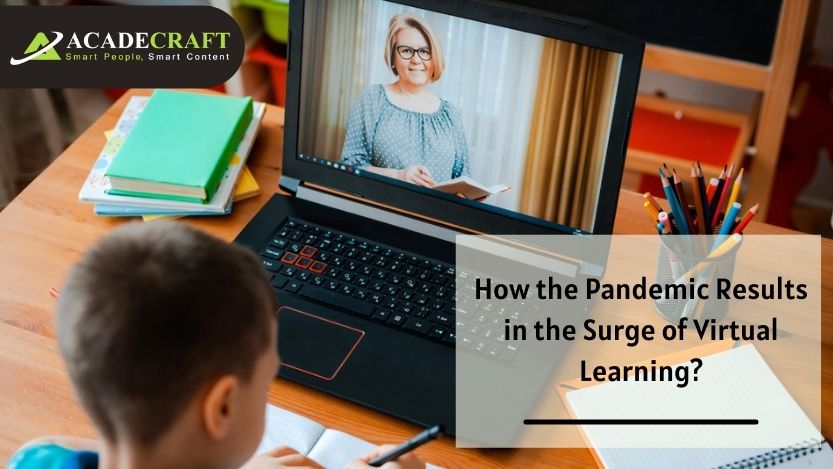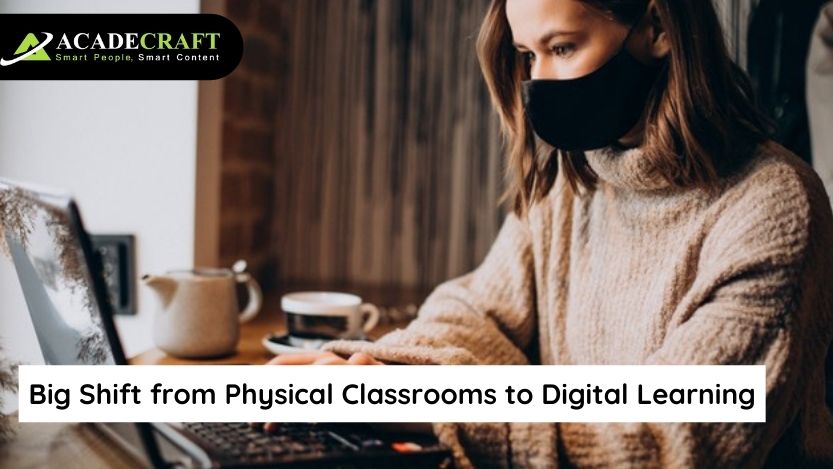
We remember 2020 as the year of the infamous COVID-19 pandemic and its monstrous threat to humanity. It forced a global shutdown of the economic, educational, and daily activities of billions of people worldwide. As the pandemic paused, almost every sector of people?s daily life, we evidenced a major humanitarian crisis that stranded and devastated millions far away from their homelands.
Keeping these aside, the global education sector faced the worst blow, probably as the world saw how schools, colleges, universities, and every educational institution came to a standstill.
However, as R. Tagore said - wherever there?s a will, there is a way; the education sector found its way out.
Digital or Virtual Lab solutions that were already growing in the pre-pandemic times saw an overwhelming response globally. As more educational institutes and business organizations came up with their endeavours, eLearning's new trending sector saw an evolution like never before.?
It facilitated different instructional activities of educational institutions and overcame a considerable number of challenges that the pandemic threw at us.
In this blog, let us look at how the COVID-19 pandemic actually changed the education sector forever.

On-Demand Classes for New-Age Learners
Unlike traditional classes, students can now easily access educational content via recorded lectures and other study materials. Learners and instructors are connecting with students to discuss different subjects via various eLearning methods.
With the new era of on-demand classes, interactive curriculums like quizzes and puzzles have become quite famous in encouraging students. Teachers and professors either connect with students directly to discuss topics or create and send chapter-wise content (either video or audio) to do the same.
Online Classrooms Replaced Traditional Ones
Virtual classrooms have become a replica of traditional ones with different interactive tools and multimedia content. It gives learners in-person experience that they used to get in physical classrooms.
Students engage and interact with their teachers and other classmates virtually. Whether they have doubts to clarify or questions to ask, the teacher manages them either in separate sessions or in the group sessions themselves. It brought a new phase of learning, an interesting one, especially for young students. Not just that, this online classroom thing is also making students more tech-savvy and gadget-friendly.
Online Assignments Are the New Homework
Some things never change, no matter what. Much to a student?s despair, traditional homework is no more a thing because online assignments have replaced them.
Schools, high schools, colleges, and universities of most countries now assign students with assignments. Unlike traditional homework, these are much more interesting because students need to work on their laptops, PCs, or smartphones instead of sitting with a pen and notebook.
Depending on the available resources, online assignments can vary from PPT presentations to Word Docs and even beyond them sometimes. Teachers evaluate a student?s performance based on his or her research and analytical skills. From the assignments, they also judge a student?s intelligence and give them grades accordingly.
Are Digital Learning Solutions Here to Stay?
It has been almost more than a year since we first heard about the Novel Coronavirus. Then the pandemic happened, and the lockdown followed its footsteps to halt the world for an infinite quarantine.
Standing here today, even though the restrictions are loosened and vaccines have started to roll out in different countries, we can?t say that the chapter is over. We are at a phase when we have gathered enough reasons to be thankful for this eLearning sensation that picked our hopes up.
So, honestly speaking, Digital Learning solutions are going nowhere, even if traditional classrooms start working full-fledged from tomorrow. As far as convenience is concerned, it is a fact that virtual classrooms will never match the limitless options of physical classrooms.
However, considering how interactive classroom sessions are possible even without meeting physically, maintaining any social distancing norms, we can conclude that this ecosystem will only grow in the coming days.
Moreover, educational institutions can ask professional companies like Acadecraft to share their experience by building a virtual learning infrastructure that can continue the academic session without hampering students? performance. For new-age learners, video and interactive content are the new study materials. Whether it?s a K-12 kid or corporate employee, he or she can attend the training session remotely along with their full-time job amid a pandemic. Online learning is the future of education, where educators and learners will connect virtually. Optimum solutions for educational institutions can draw learners? attention and boost efficiency levels.
Share